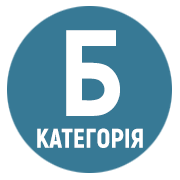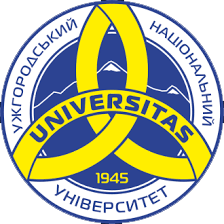THE INFLUENCE OF MIRROR REFLECTIONS ON THE PSYCHOLOGICAL STATE AND COORDINATION OF MOVEMENTS OF DANCERS AND ATHLETES
DOI:
https://doi.org/10.32782/psy-visnyk/2024.3.15Keywords:
sports, ballroom dancing, influence of mirrors on learningAbstract
The article examines the influence of mirror reflections on dancers during the learning of motor skills, in relation to their periodic gazing at their own image to control the execution of certain figures, without considering physiological regularities. In the study, one subgroup of dancers studied compositions of sports ballroom dances in a mirrored hall, while the other studied in a regular hall. After 4 months, children aged 6–8 years who trained in the regular hall mastered compositions consisting of 4–6 figures from five dances: figure waltz, cha-cha-cha, rumba, tango, and jive. However, the subgroup that trained in the mirrored hall did not manage to master this program. The older age group of 50–60 years also did not manage to master the program within the same timeframe; the subgroup training in the regular hall required 6 months to master the program. In contrast, the subgroup training in the mirrored hall did not manage to master the compositions within 6 months. The moving body’s reflection in the mirror activated the motoneurons in the brain responsible for muscle contractions according to visual perception, disrupting movement coordination. Motivational factors and positive emotions were insufficient to overcome these disruptions. Since athletes had developed a movement stereotype, the influence of mirror reflections during training in different halls did not yield any significant results. Initially, mirrors in the hall had a positive psychological effect on dance pairs, enhancing mood and the desire to engage more intensively in dancing. However, lagging behind other dancers who trained without mirrors nullified all their efforts. Based on the conducted studies, it was concluded that the use of mirrors in sports halls hinders the process of learning sports skills.
References
Омельяненко, В. І., & Гребеник, О. В. (2024). БІОМЕХАНІКА В АКАДЕМІЧНОМУ ВЕСЛУВАННІ. Фізичне виховання та спорт, (1), 94–98. https://doi.org/10.26661/2663-5925-2024-1-12
Fabbri-Destro M, Rizzolatti G. Mirror neurons and mirror systems in monkeys and humans.Physiology 23: 171–179, 2008.
Ferrari PF, Rizzolatti G.Mirror neuron research: the past and the future. Phil. Trans. R. Soc. 2014, B 369: 20130169.
Hamilton A.F. Reflecting on the mirror neuron system in autism: A systematic review of current theories. Developmental Cognitive Neuroscience 3, 2013: 91–105
Hickok G. Eight problems for the mirror neuron theory of action understanding in monkeys and humans (англ.) // J Cogn Neurosci (англ.): journal. 2009. Vol. 21, no. 7. P. 1229–1243. DOI:10.1162/jocn.2009.21189. PMID 19199415.
Kosonogov, V. Why the Mirror Neurons Cannot Support Action Understanding // Neurophysiology : journal. 2012. Vol. 44, no. 6. P. 499–502. ISSN 0090-2977. DOI: 10.1007/s11062-012-9327-4.
Iacoboni M., Dapretto M. The mirror neuron system and the consequences of its dysfunction, Nat. Rew. Neurosci., Dec 2006 vol 7.
Pascolo P.B., Ragogna R., Rossi R. The Mirror-Neuron System Paradigm and its consistency (англ.) // Gait & Posture : journal. 2009. Vol. 30, no. Suppl. 1. P. 65. DOI: 10.1016/j.gaitpost.2009.07.064.
Rizzolatti G., Sinigaglia C. The mirror mechanism: a basic principle of brain function // Nat 2. Rev Neurosci. 2016 Dec; 17 (12): 757–765.






